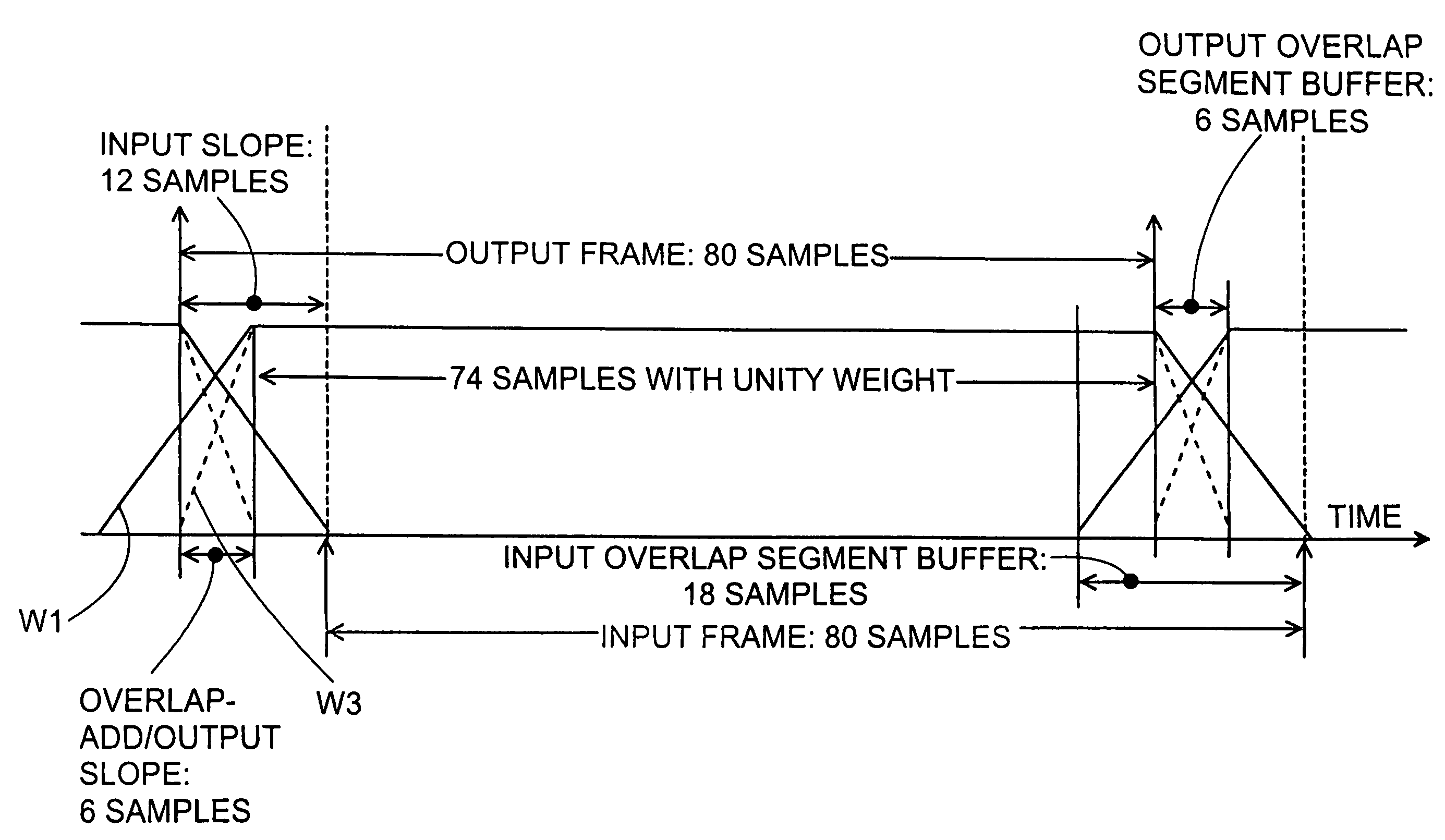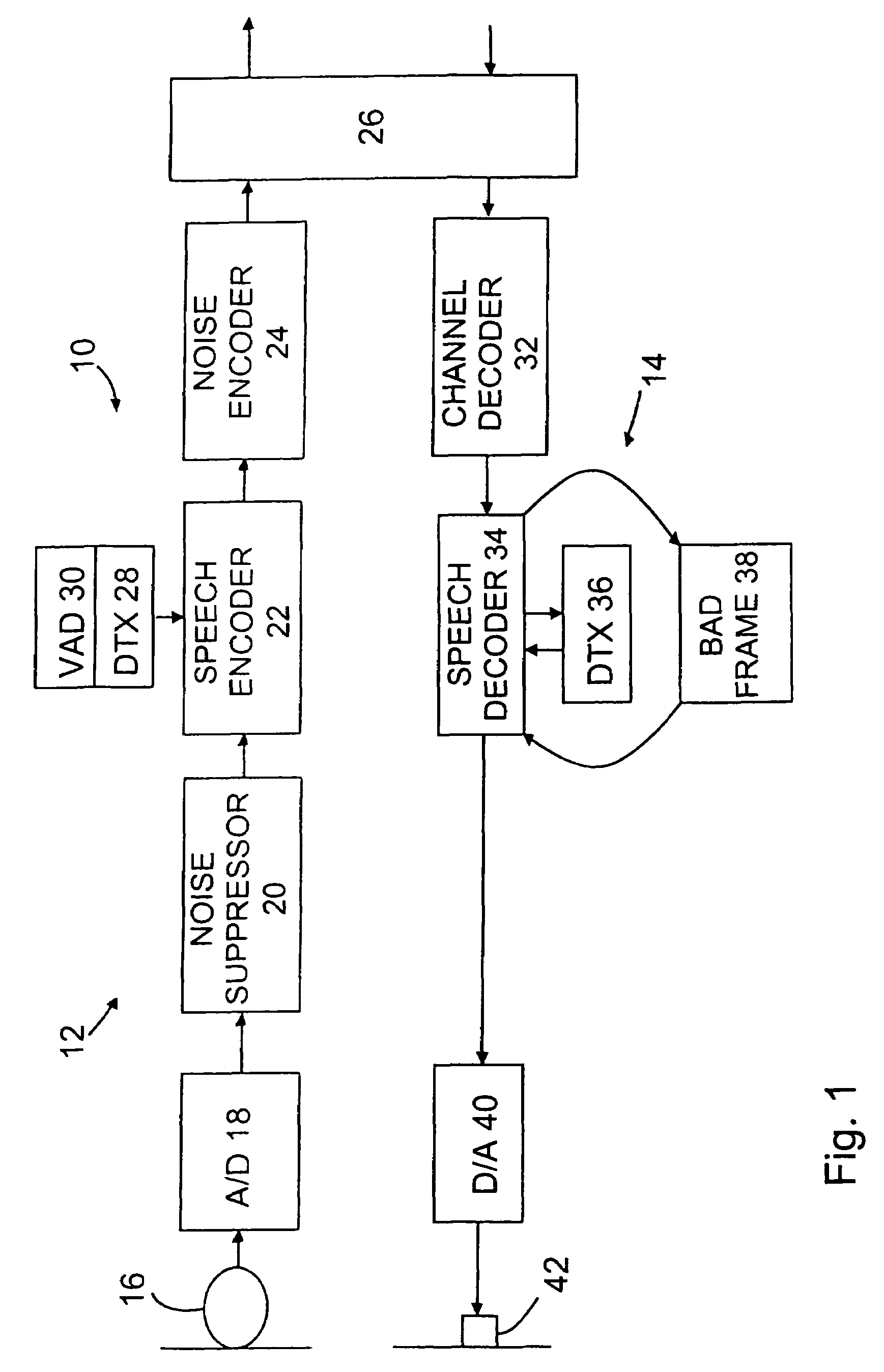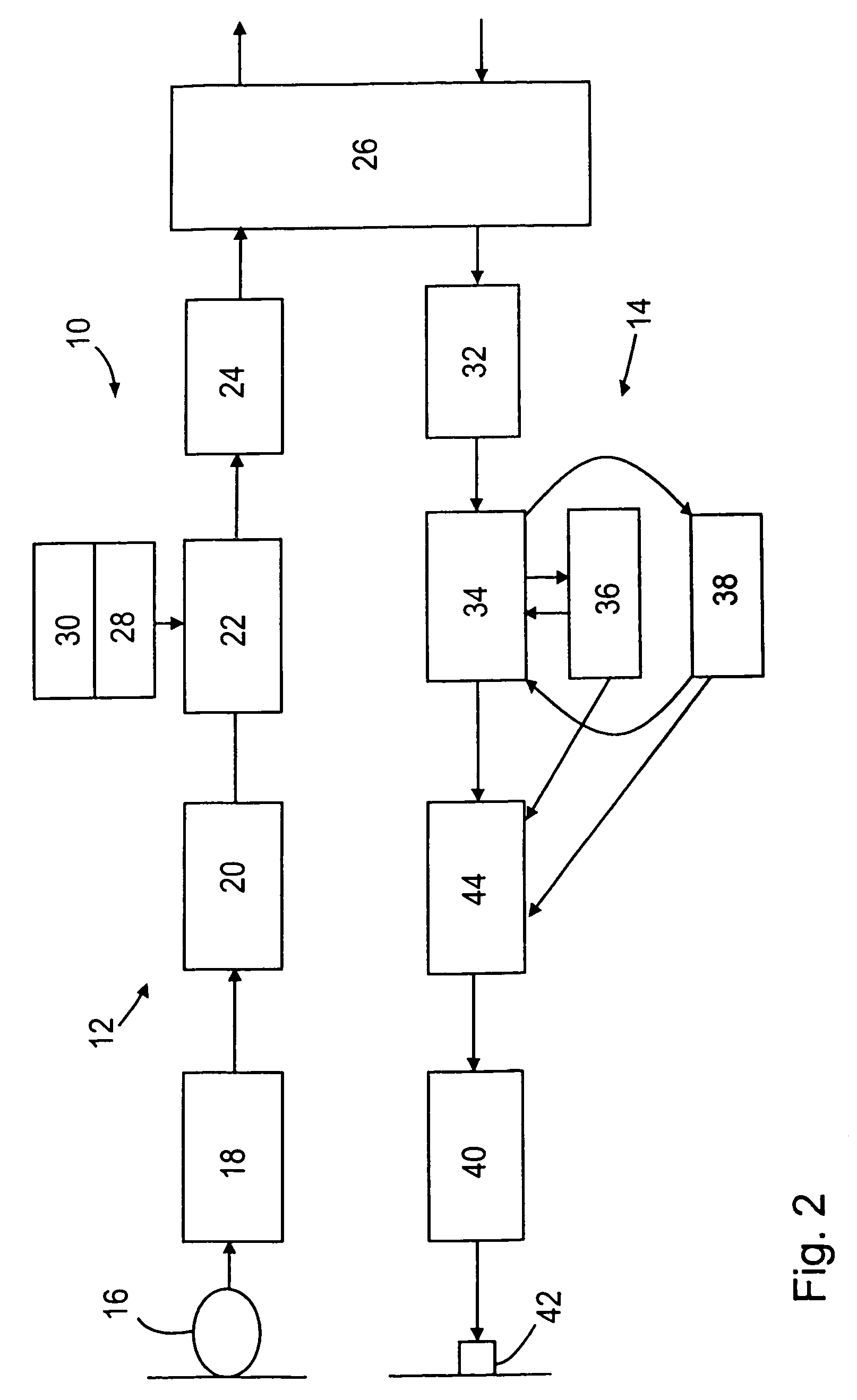Noise suppression
a noise suppression and noise technology, applied in the field of noise suppression and noise suppression methods, can solve the problems of troublesome background noise, more difficult to understand speech, and large deleterious effect of background noise, so as to reduce the rate of up-dating of noise estimates, reduce real noise, and reduce the effect of noise estimation
- Summary
- Abstract
- Description
- Claims
- Application Information
AI Technical Summary
Benefits of technology
Problems solved by technology
Method used
Image
Examples
Embodiment Construction
[0107]FIG. 1 has been described above in connection with conventional noise suppression techniques known from the prior art.
[0108]FIG. 2 shows a mobile terminal 10 similar to that of FIG. 1, modified according to the present invention. Corresponding reference numerals have been applied to corresponding parts. The terminal 10 of FIG. 2 additionally comprises a noise suppressor 44 located in the receiving (down-link / speech decoding) branch 14. It should be noted that the noise suppressor 44 is connected to the DTX handler 36 and the bad frame handling unit 38. The noise suppressor 44 receives signals from the DTX handler 36 and the bad frame handling unit 38 which influence its operation, as will be described below. It should be noted that while the noise suppressor units in the speech encoding and speech decoding branches are shown as separate blocks (20 and 44) in FIG. 2, they may be implemented in a single unit. Such a single unit may have both speech encoding and speech decoding n...
PUM
 Login to View More
Login to View More Abstract
Description
Claims
Application Information
 Login to View More
Login to View More - R&D
- Intellectual Property
- Life Sciences
- Materials
- Tech Scout
- Unparalleled Data Quality
- Higher Quality Content
- 60% Fewer Hallucinations
Browse by: Latest US Patents, China's latest patents, Technical Efficacy Thesaurus, Application Domain, Technology Topic, Popular Technical Reports.
© 2025 PatSnap. All rights reserved.Legal|Privacy policy|Modern Slavery Act Transparency Statement|Sitemap|About US| Contact US: help@patsnap.com



